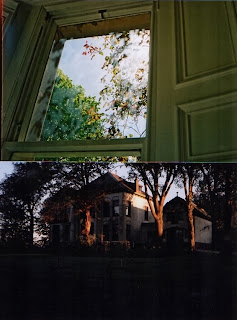What
can I read from a photograph? Do we see reality in a photograph, an image of reality, or a representation of the real? The
dialectic between photography and reality has been a subject of photography
theory for the last century. Is looking at and analysing photographs intrinsically
difficult because of the multiple, complex, fragmented matrices of information
which they contain? Various writings on photography affirm this concept. James
Elkins in his book ‘What is Photography?’ writes; ‘[….] I come to recognize my
helplessness in the face of the endless irrelevant details of the world that
photography impertinently and obstinately keeps giving.’ (72) Jean Baudrillard
in an essay ‘Photography, Or The Writing
of Light’ writes; ‘Through the image the world asserts its discontinuity,
its fragmentation, its artificial instantaneousness.’ and Susan Sontag in ‘On
Photography’; ‘Photographs, which cannot themselves explain anything, are
inexhaustible invitations to deduction, speculation, and fantasy’ (23)[i]
I
developed this project out of the activities which I have been doing with my
images. Please refer to posts from my blog playspacetime below for examples of combines that led to this project. I wanted to engage the viewer by inviting them to look through my
images and make their own combinations. It is my hope that the activity of combining
enables formal and / or associative interpretations to develop freely, without
being led by me as the artist as to which associations are allowed or
anticipated. I have chosen to use 10 x 15cm prints (colour and black and white)
taken from my archive. I wanted stay to as close as possible to the experience
which I have in my studio when I am making combinations. The difference between
looking through prints and looking through images on my computer is important. I
realised that when making a combine I start with the prints initially; there is
the actual physical handling of the images, placing, replacing, and then I scan
and make them on screen for posting to my blog. This handling is essential
because it allows the images to touch, for the relationships to develop almost
in a physical way. When we can handle images we take them more towards us
physically, the design of The Combines Project takes this into account.
Ars Combinatoria refers to a term used by Raul Ruiz in Poetics of Cinema, ‘In so far as story structure is concerned, I should like to propose an open structure based on ars combinatoria. A system of multiple stories[…...]’.[i] (88) I have borrowed this term from Ruiz because I believe it describes very well a methodology of combining, for example, text to image, image to image, text to text, object to text, object to object. (Historically this term refers to a method used in the field of logical philosophy.) Combining fosters a play on meanings.
[i] Raul Ruiz.1941 -2011.
http://dindafass.blogspot.co.uk/2011/03/combines.html
http://dindafass.blogspot.co.uk/2012/03/combines-part-2.html
http://dindafass.blogspot.co.uk/2011/03/combines.html
http://dindafass.blogspot.co.uk/2012/03/combines-part-2.html
Discovering Cecile Hummel’s photographic work was instrumental for the development of this project..[i] I think I use some similar strategies to her in my image making. Hummel makes images in the street, in the home, of domestic situations, (for example, used ice-cream tubs, a game of cards) and she sometimes combines two images together (with a gap) which make formal compositions, and associative relationships. Hummel also uses found images in combination with her own. The strategy used to display the images in her book Nisi Novum Sub Solum is interesting; through the use of images approximately the same size as a 10 x 15 cm print she combines two images per page (with a gap in between). Sometimes the images give information to each other, by looking at one you begin to notice what is going on in the other, through one you learn to read the codes of the other. Hummel’s subject matter ranges from street architecture and objects, to market stalls and produce, and the people who run them; from colour photography, to black and white.
the following combines were made by the public at NP3 temp gallery in Groningen, The Netherlands, during 6 days in July, 2012
















































































































































